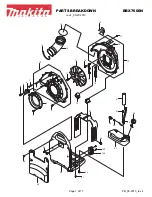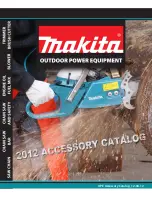
4.
Regularly check and regularly calibrate the safety valve. When the pressure in the tank body is
higher than 0.1MPa, check whether the safety valve jumps normally;
5.
Regularly observe whether the locking nut is tight. If not, use a wrench to screw it tightly and
then re-observe whether it is tight. If the locking nut is still untight after it is screwed, replace the
seal gasket and then screw it;
COMMON PROBLEMS
The handles of the pressure
increasing valve, the exhaust
valve and the liquid
inlet/outlet valve are too
tight.
The connection between
the liquid inlet/outlet valve
or the exhaust valve and
the valve seat leaks.
The boosting time is long
or boosting is completely
impossible.
Although there is an internal
pressure, the drain rate is
slow or it is completely
impossible to drain liquid.
The internal pressure of the
container has reached
above 0.09MPa for once.
The safety valve is still not
opened.
After the safety valve is
opened, the pressure in the
container drops to below
the set pressure, the spring
can't be reset and the valve
continues to eject gas.
1.
The safety valve is frozen;
2.
The set pressure of the
safety valve is offset.
1.
The safety valve is frozen;
2.
There are foreign matters
on the sealing surface of
the safety valve;
3.
The set pressure of the
safety valve is offset.
1.
Conduct ice melting and water
removal;
2.
Remove the foreign matters on
the sealing surface;
3.
Return to depot
1.
Conduct ice melting and water
removal;
2.
Remove the foreign matters on
the sealing surface;
3.
Return to depot
1.
The drain pipe or the
drain valve is frozen;
2.
There is no liquid nitrogen
in the container or not all
liquid inlet/outlet valves are
opened.
1.
Carry out ice melting and water
removal.
2.
Open all liquid inlet/outlet
valves.
1.
The boosting pipe or the
pressure increasing valve is
frozen;
2.
Air leaks.
3.
The safety valve cannot
return normally after
jumping and it causes air
leakage;
4.
There is no liquid
nitrogen in the container or
there is a little liquid
nitrogen in the container;
1.
Conduct ice melting and water
removal;
2.
Mix soap with water, check the
suspected air leakage part and
eliminate leakage.
3.
Check whether the safety valve
can jump and return normally.
4.
Check the capacity of liquid
nitrogen in the container.
The connection between
the valve stem and the
valve body leaks, and the
gasket or the sealing
material is damaged.
Replace the PTFE seal ring at the
connection or the thread sealing
material.
In use, use an electric blower to
heat the valve as the temporary
measures. After liquid nitrogen
in the container is emptied,
disassemble the valve to
remove moisture or ice.
There is moisture or ice in
the valves.
1
2
3
S/N
Fault
Reason
Troubleshooting Method
4
5
6
Once the boosting pipe is blocked by ice and can't increase the pressure, the following ice
melting measures can be taken:
①
Adopt the air pressure method to eliminate the residual liquid nitrogen in the container. The
method is as follows: Screw the lock nut at the top of the valve seat tightly, close the pressure
increasing valve, open the liquid inlet/outlet valve and the exhaust valve, and use nitrogen or dry
gas (do not use oxygen or any other combustible gas) to increase the pressure from the exhaust
valve to the container, so as to empty the residual liquid nitrogen in the container via the liquid
inlet/outlet valve. If it is found that the liquid inlet/outlet valve is blocked, remove the liquid
inlet/outlet valve, and observe the valve seat screw hole corner and the liquid inlet/outlet valve
body for blockage of ice particles. In case of blockage, use hard wires to remove ice particles or
use an electric blower or a hot blast dryer for ice melting (at a temperature not higher than 40°C)
and then liquid drainage.
②
Under the condition of emptying the residual liquid nitrogen in the container, close the liquid
inlet/outlet valve, remove the external connecting pipe of the pressure increasing valve, and
continuously fill the hot air at normal temperature or at a temperature not higher than 40°C and at
a pressure of about 0.05MPa from the exhaust valve for several hours. When it is observed that
the gas without beads ejected from Place A increases gradually, it indicates that the boosting pipe
is smooth and the ice melting and water removal work is completed.
Note:
Since the humidity at each place, the use frequency of the container and the liquid nitrogen
filling method are different, the interval of the ice melting measures can be decided by the user
according to the circumstances.
①
Liquid level ruler estimation method. In use, insert the liquid level ruler into the container until
the liquid level ruler contacts the bottom of the liner, stand for 15s and then take out the liquid
level ruler to expose it to the air. Since the part soaked by liquid nitrogen above the liquid level
ruler will form a layer of white frost in the air, roughly estimate the liquid nitrogen storage from the
boundary of the white frost.
②
Weighing method. Use a weighing machine to measure the mass of the container filled with
liquid nitrogen, subtracted by the empty weight of the container in Table 1 of the Instructions to
obtain the mass of liquid nitrogen in the container, and thereby calculate the volume of liquid
nitrogen (the density of liquid nitrogen is about 0.808 kg/L). The accuracy of this method is higher
than that of the liquid level ruler estimation method.
3.
Regularly check and regularly calibrate the pressure gauge, observe the indicated readings for
abnormalities, and observe whether the reading of the pressure gauge is zero when there is no
liquid nitrogen and no pressure in the tank body;
2. Measuring Method for Liquid Nitrogen Amount in the Liner
19
18






























